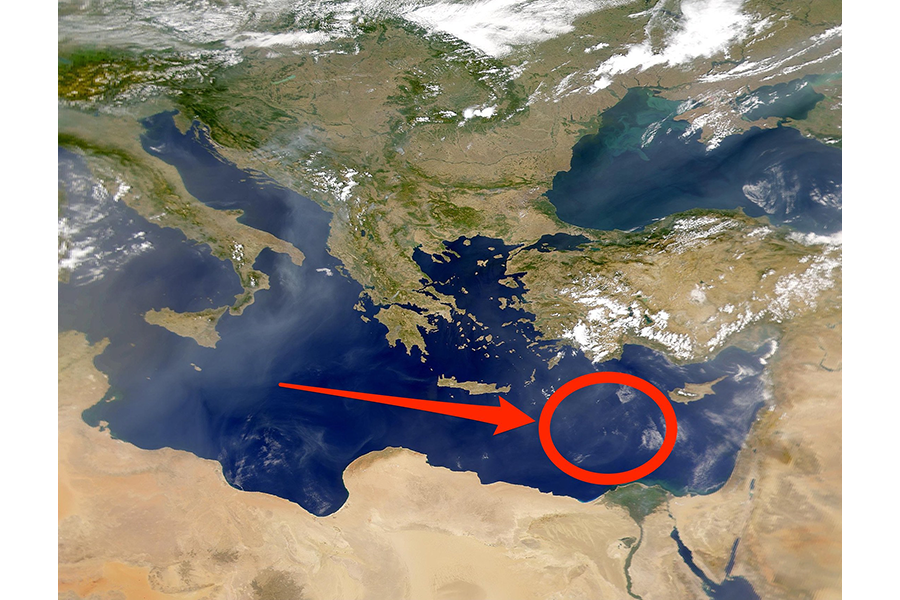Before the Atlantic, before the Pacific: a 340-million-year-old ocean crust
Loading...
Where might you find the oldest oceanic crust on the planet?
According to a new study, that would be the eastern Mediterranean Sea, where a piece of crust has been identified that could be as much as 340 million years old. While the shell of Earth’s surface can date to billions of years on land, the oldest pieces to be found beneath the ocean rarely date to more than 200 million years.
This research, published Monday in the journal Nature Geoscience, used magnetic sensing equipment to peer through as much as eight miles of sediment that blankets the floor of the Mediterranean, and see the crust below.
"Changes in the magnetic field's orientation over time are recorded in the ocean floors, creating a unique barcode that provides a timestamp for crust formation," Roi Granot, the study’s author, said in a statement. "The results shed new light on the tectonic architecture and evolution of this region and have important implications on various geodynamic processes."
Oceanic crust is so young, relatively speaking, because of the way it forms. Originating at mid-ocean ridges, where hot magma seeps from the planet’s inner regions, the crust thus formed gradually shifts outward, toward the edges of the ocean.
When it reaches those peripheries and encounters the continents, it slips beneath and is reabsorbed into the Earth’s mantle, eventually to rise again as fresh magma.
But for the period that oceanic crust does grace the seafloor, it holds distinctive magnetic characteristics that imprint certain information readable to those with relevant insight, and appropriately equipped. As the magma cools, moving away from the mid-ocean ridges, magnetic minerals within align themselves with the Earth’s magnetic field, something that changes at irregular intervals.
In aiming to read these signatures at the bottom of the Mediterranean, Dr. Ganot and colleagues towed magnetic sensors behind a boat, collecting 4,300 miles of marine magnetic profiles over four research trips between 2012 and 2014.
The results clearly depicted oceanic crust, and Ganot was able to date it to 340 million years, putting it far beyond the oldest recorded segment previously discovered, which sits off Japan.
“It would mean that this ocean was formed while Pangea, the last supercontinent, was still in the making,” Ganot told Business Insider.
Yet not everyone is persuaded by the findings, citing, for one thing, the miles of sediment concealing the crust, which make any readings hard to interpret.
“This is a nice suggestion that certainly will promote more debate,” Uri ten Brink at the US Geological Survey in Woods Hole, Massachusetts, told New Scientist. “But it is by no means something that one can totally hang their hat on.”






